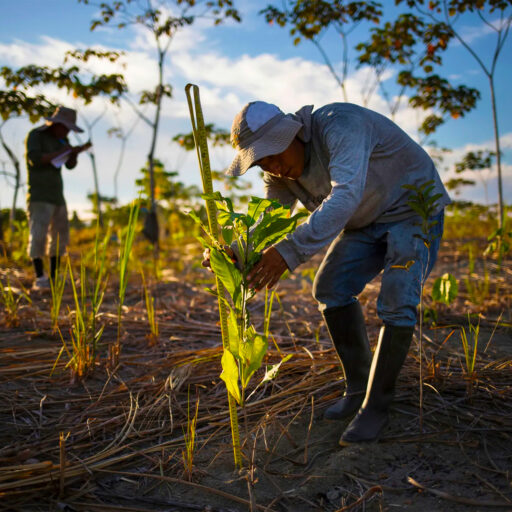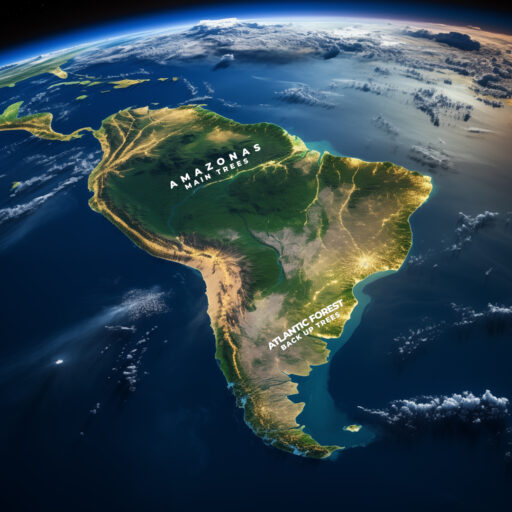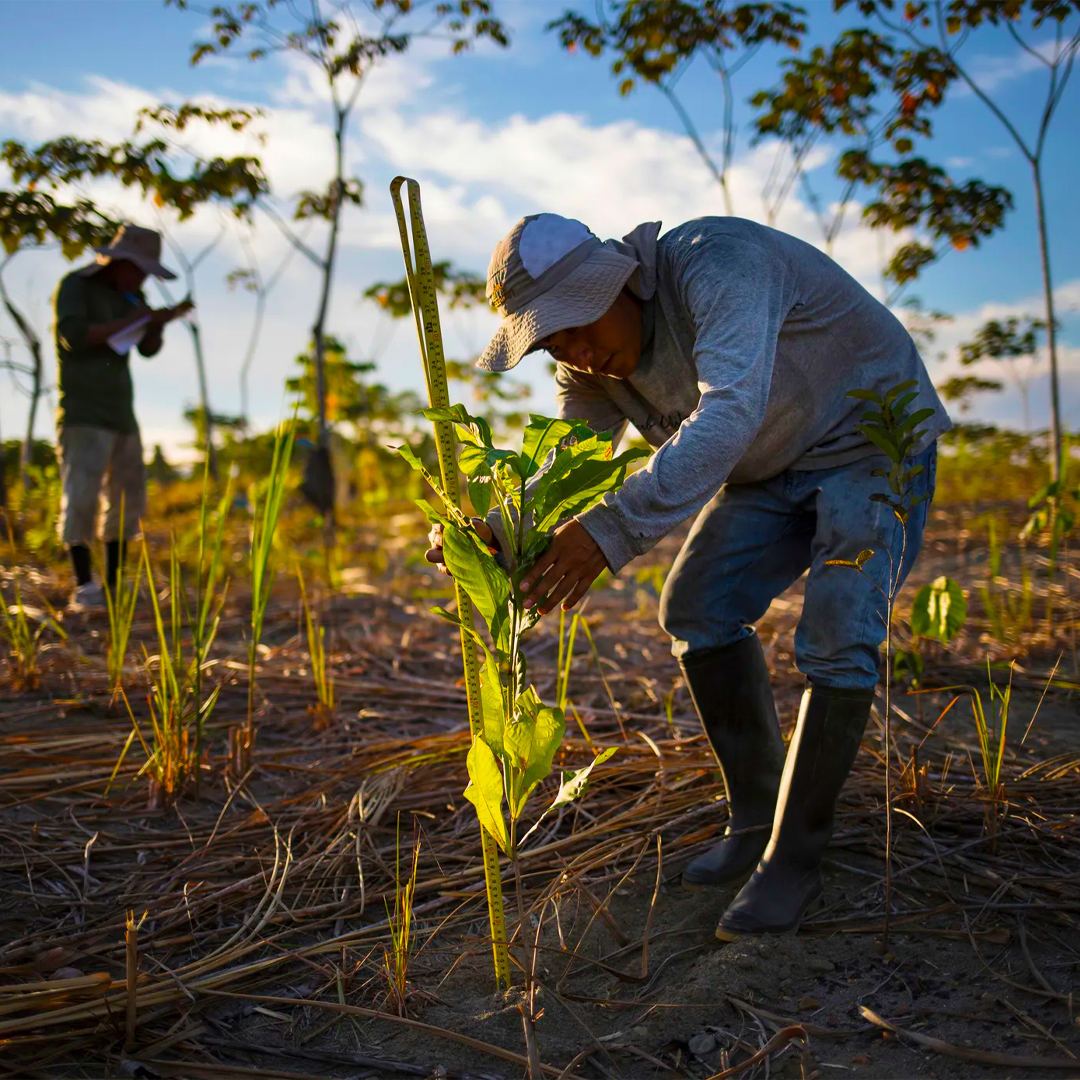In a world grappling with environmental challenges, the quest for effective solutions has led us to reevaluate the potential of nature’s silent heroes – trees. Common knowledge suggests that a single tree absorbs around 30 kg of carbon dioxide annually. There’s an emerging story that promises to revolutionize our approach to reforestation: agroforestry systems.
Planting Agroforestry Systems: A Paradigm Shift
Contrary to the traditional practice of planting individual trees, we’re embracing the power of agroforestry systems. These systems involve strategically intercropping trees with other plants, creating a harmonious ecosystem that magnifies the environmental impact. The closer these systems are to the equator, the more potent their CO2 absorption becomes.
Research indicates that trees within agroforestry systems may absorb up to six times as much CO2 as their solitary counterparts. It’s not just about the trees; it’s about the symbiotic relationships formed within these diverse ecosystems.

Unpacking the Numbers: A Closer Look at Agroforestry’s Magic
Why is it that a tree (NFTree) can absorb an impressive 175 kg of CO2 annually? Let’s explore the intricacies without being encumbered by calculations involving up to six times more CO2. Instead, we’ve opted to rely on data per tree until it gains global recognition.
In the first year of an agroforestry system’s life, a collective effort of five trees results in an extraordinary 91 kg of CO2 absorption. This initial burst, while remarkable, isn’t sufficient to guarantee carbon debits because we issue the tree owners 175 kg CO2 per year. To address this, we’ve implemented an innovative solution – the “back-up trees.”

Ensuring Carbon Debits: The Back-Up Tree Solution
Recognizing the lag in CO2 absorption during the initial years, we’ve devised a robust plan. For every agroforestry system, we plant two additional back-up trees which are also again in agroforestry systems. These trees act as a safety net during the critical first three years, ensuring that we meet our carbon debit commitments.
To maintain transparency and accountability, we’ve established a public pool. For each kilogram of CO2 sold, an equal kilogram is placed in this pool, linked to our back-up trees. Over time, as the main agroforestry system begins to reach its full carbon-absorbing potential, the need for the back-up trees diminishes.

The Green Revolution: Impact and Transparency
By adopting agroforestry systems and this innovative approach to carbon offsetting, we’re not just planting trees – we’re sowing the seeds of a more sustainable future. Our commitment extends beyond promises, and we provide absolute transparency by backing every sold kilogram of CO2 with tangible action.
This transformative method ensures that we’re creating the most significant impact for the planet while delivering unprecedented transparency in the carbon offset sector. We believe in real, measurable change, not just theoretical promises.
Nurturing Agroforestry Systems: The Journey Begins
In our agroforestry systems, a hectare hosts around 600 tagged hardwood trees, creating a mosaic of 2500-3000 diverse plants, including (native) Amazon species like Cacao, Passionfruit, Mexican Sunflower, Papaya, Coffee, Banana, and hardwoods. These species are carefully chosen by the farmers not only for their commercial value but also for their unique ecological contributions. Cacao trees, for instance, provide shade to more delicate plants, while the sturdy hardwoods serve as a backbone for the entire ecosystem.
Located strategically near the equator, our agroforestry systems leverage the region’s warmth and sunlight to enhance photosynthesis, maximizing carbon dioxide absorption. This geographical advantage is pivotal in amplifying the positive impact of our initiatives on the environment.
In essence, our approach is a commitment to sustainable land use, promoting biodiversity, preventing soil erosion, and mitigating climate change effects. The journey has begun, and with each planted seed, we sow the seeds of a greener, more resilient planet.

The Role of the Community: Joining Hands for a Greener Future
Our journey is not one we undertake alone. We invite communities, businesses, and individuals alike to join hands in fostering real change. Planting trees is not just an environmental initiative; it’s a collective effort to build a sustainable future for generations to come.
To ensure widespread awareness and participation, we’re establishing educational programs and community engagement initiatives. Through these efforts, we aim to empower individuals with the knowledge and tools needed to contribute to the global movement for environmental conservation.
We believe that the circle of environmental impact can turn faster with the support of the community. If the community helps by providing leads to sell the CO2 captured during our initiatives, the circle will accelerate. With more CO2 sold, we can generate additional resources to plant and sustain more trees. This interconnected cycle creates a positive feedback loop, where the more CO2 we sell, the more trees we are able to plant and sell, further reinforcing our commitment to a greener and healthier planet. Together, let’s make a lasting impact on our environment and create a legacy of sustainability
Looking Ahead: A Greener, Healthier Tomorrow
As we look ahead, the promise of a greener, healthier planet lies within the transformative power of agroforestry systems. With a commitment to transparency, innovation, and community involvement, we’re confident that our approach will set a new standard in the fight against climate change.
Our journey has just begun, and the seeds we plant today will blossom into a legacy of sustainability and environmental stewardship. Join us as we navigate this path toward a future where the earth breathes a sigh of relief, thanks to the extraordinary potential of agroforestry systems. Together, we can turn the tide and create a world where nature thrives and humanity coexists harmoniously with the environment.

























